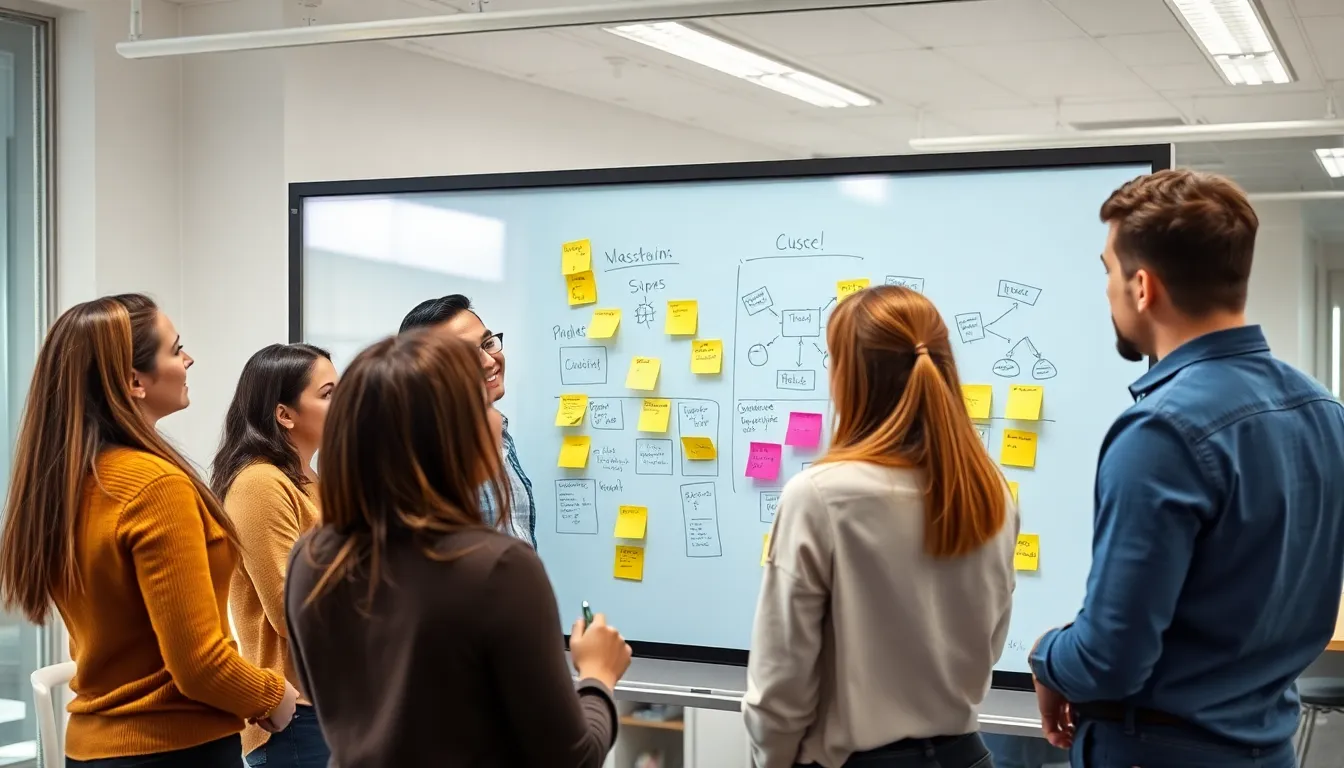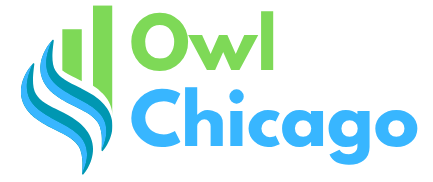Table of Contents
ToggleIn a world where brainstorming often feels like herding cats, it’s time to explore some mindstorming alternatives that can spark creativity without the chaos. If the idea of shouting out ideas in a crowded room makes you break out in a cold sweat, you’re not alone. Traditional brainstorming can be as productive as a screen door on a submarine.
Understanding Mindstorming
Mindstorming serves as an alternative to traditional brainstorming. This approach addresses the limitations of conventional methods by fostering creativity in structured environments.
Definition and Origins
Mindstorming refers to collaborative creativity techniques that emphasize structured thinking. Originating from the need to overcome traditional brainstorming’s chaos, this method encourages clear communication and idea generation. Developed during the rise of collaborative technologies, mindstorming aims to make creative processes less stressful. Instead of herding participants into a chaotic session, it promotes focused discussion and reflection, allowing diverse perspectives to flourish.
Key Features of Mindstorming
Mindstorming incorporates several key features that enhance creative collaboration. First, it emphasizes organization, utilizing frameworks that guide discussions and keep participants on track. Second, it promotes inclusivity, ensuring all voices contribute to the creative dialogue. Third, it integrates visual aids, which help crystallize ideas and foster understanding. Lastly, it embraces technology by utilizing digital tools that facilitate real-time collaboration among team members. These features collectively create a more effective and engaging environment for idea generation.
Popular Mindstorming Alternatives

Many individuals seek more effective methods for idea generation beyond traditional brainstorming. Below are popular alternatives that enhance creativity and focus.
Brainstorming Techniques
Mind mapping serves as a visual tool that organizes ideas into a structured diagram. It encourages free thinking and allows participants to see connections between concepts. SCAMPER offers a checklist for innovating existing ideas, prompting teams to Substitute, Combine, Adapt, Modify, Put to another use, Eliminate, and Reverse aspects of concepts. Six Thinking Hats provides different perspectives on a problem by assigning roles that focus on emotion, analysis, creativity, and organization. Each technique boosts engagement and hones in on unique elements to drive innovative outcomes.
Collaborative Tools
Digital platforms enable real-time collaboration on ideas. Tools like Miro and MURAL allow teams to create virtual whiteboards, facilitating interactive sessions. Google Jamboard supports team brainstorming with sticky notes and drawing features, enhancing visual collaboration. Notion offers a comprehensive workspace where members can organize notes, tasks, and ideas in one place. These tools create a dynamic environment, improving communication and participation among team members.
Digital Mindstorming Alternatives
Digital tools enhance mindstorming by providing structured frameworks that promote creativity. They simplify idea generation and encourage collaboration among participants.
Mind Mapping Software
Mind mapping software organizes thoughts visually, aiding in clarity and innovation. Popular options like MindMeister and XMind allow users to create interactive mind maps. These maps capture and connect ideas efficiently, making complex information easily digestible. Users can collaborate in real-time, offering immediate feedback and expanding perspectives. Visual representation fosters deeper understanding, which traditional lists often lack. Additionally, templates streamline the mind mapping process, enabling quick setup for users.
Online Collaboration Platforms
Online collaboration platforms facilitate teamwork, breaking down geographical barriers. Tools like Miro, MURAL, and Google Jamboard enable real-time contributions, fostering an engaging atmosphere. These platforms support varied formats including sticky notes, diagrams, and images, enhancing creativity. Participants can manage projects and visually track progress, which enhances transparency. Integrating chat functions also promotes effective communication, allowing teams to discuss ideas instantaneously. By utilizing these platforms, teams cultivate an environment rich in creativity and collaboration.
Creative Thinking Strategies
Exploring creative thinking strategies can unlock new approaches to problem-solving. These techniques enhance idea generation and collaboration, fostering an innovative environment.
Lateral Thinking
Lateral thinking encourages looking at problems from different angles. This strategy focuses on breaking away from traditional reasoning and promotes unconventional solutions. Techniques like provoking challenges and generating random inputs can ignite fresh ideas. An example includes framing a statement in reverse to uncover hidden opportunities. Incorporating lateral thinking often leads to breakthroughs by shifting perspective. As a result, teams discover answers beyond conventional boundaries.
SCAMPER Method
The SCAMPER method is a structured technique for exploring new ideas. Each letter stands for a different action: Substitute, Combine, Adapt, Modify, Put to another use, Eliminate, and Reverse. Utilizing these prompts can inspire innovative thinking and help refine existing concepts. For instance, asking how to combine two products can reveal new market opportunities. SCAMPER enhances creativity by providing a clear framework for generating modifications and improvements. Furthermore, this method can stimulate discussion and collaboration among team members, driving engagement.
Choosing the Right Alternative
Selecting the right alternative requires careful consideration of various factors and an evaluation of effectiveness.
Factors to Consider
First, consider the team dynamics. Assess how well team members collaborate and communicate, as certain techniques work better in specific environments. Next, reflect on the nature of the project. Teams facing complex issues benefit from structured methods, while simpler tasks might suit a more free-flowing approach. Additionally, remember the time constraints. Some techniques demand more time for thorough exploration. Also, available tools influence the choice; ensuring access to the necessary digital platforms helps maximize collaboration. Finally, recognize each person’s strengths; diverse skills can enhance the effectiveness of chosen alternatives.
Evaluating Effectiveness
To evaluate effectiveness, start by measuring engagement levels among participants. High involvement signals resonance with the chosen method. Next, gauge the quality of ideas generated during sessions. This indicates whether the alternative spurred innovation or merely recycled existing thoughts. Collect feedback after each session to identify areas for improvement. Observing the discussion dynamics provides insights into facilitation effectiveness. Also, track the implementation of ideas generated. Success in executing concepts reflects the overall impact of the mindstorming technique used. Finally, adjust strategies based on evaluations to continuously enhance creativity and collaboration outcomes.
Exploring mindstorming alternatives reveals a pathway to more effective creativity and collaboration. By embracing structured techniques and digital tools, teams can transcend the chaos of traditional brainstorming. This shift not only enhances idea generation but also fosters inclusivity and engagement among participants.
Choosing the right method is essential for maximizing creativity. Each technique offers unique benefits that cater to different team dynamics and project needs. By evaluating effectiveness through engagement and feedback, teams can refine their approach and continuously improve their creative processes. Adopting these alternatives can lead to innovative solutions and a more productive environment for all involved.




